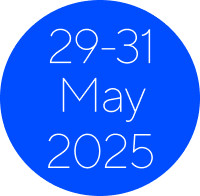Chair: Simone Dorsch (Australia)
Speakers: Smita K.C (Nepal), Kathiravan Tangaraju Anthony (Malaysia)
- Outline sections of the WHO Rehabilitation 2030 strategy that physiotherapists can lead in implementation
- Outline features of rehabilitation models that have been developed to meet the local context in low, middle and high income countries
-
Discuss how these models of rehabilitation can be used to drive innovative service delivery in the participants’ own country
The WHO Rehabilitation 2023 strategy prioritises the development of comprehensive service delivery models to provide rehabilitation globally. This symposium provides inspiring examples of rehabilitation service delivery models: home-based rehabilitation for stroke survivors in Brazil, intensive rehabilitation camps for children with cerebral palsy in Nepal, intensive hospital-based rehabilitation in Australia and community-based stroke rehabilitation in Malaysia.
In Australia, the need to increase the efficiency of rehabilitation in an urban hospital setting resulted in the development of a model of semi-supervised practice in physiotherapy. This is practice done in the physiotherapy gym independently or with family members assisting. A study of over 1300 patient observations2 found that practice done with family assistance represented 15% of observations and independent practice 26% of observations, hence semi-supervised practice was 41% of all practice. This model of therapy allows people to achieve large amounts of rehabilitation. In 25 stroke survivors the average lower limb exercises repetitions per day was over 700 with some competing more than 2000 repetitions per day of strengthening and task specific practice exercises.
In Brazil, concerns about delayed access to rehabilitation led to the development of a rehabilitation resource package to be given to stroke survivors before hospital discharge. The package consists of exercise instructions targeted to participants’ needs and a self-management tool called Take Charge1. To date, 30 stroke survivors have received and used the package at home, 29 felt it useful, with 86% indicating exercise examples were useful and 17% indicating that the take charge component was useful. Further findings will be reported at time of presentation.
In Nepal, the lack of access to rehabilitation services for children with cerebral palsy, especially those in rural areas resulted in the development of the Functional Intensive therapy camp (FITcare). FITcare is a short, intensive task-oriented therapy program for children with physical disabilities. Since 2015, eight FITcare camps have been run across Nepal. Children attend these residential camps with their caretakers and work with a multidisciplinary team on specific goals targeting activities of daily living. To date, 120 health professionals have been trained in FITcare. A Pre-post study assessed the effectiveness of a 6-day FITcare camp in 2022. The mean gross motor function classification scale score increased from 48 to 65 and the Goal attainment scale score improved by more than 60%.
In Malaysia, the National Stroke Association of Malaysia (NASAM) was established in 1996 by stroke survivor, Janet Yeo and is the first non-profit organisation in Southeast Asia to provide affordable community-based stroke rehabilitation and support to stroke survivors and their families. NASAM discovered that “There is life after Stroke” and supports holistic rehabilitation which includes physical, mental & social well-being with the aim of helping stroke survivors return to mainstream life. Currently, there are seven centres across the country which have served around 8185 stroke members since 1996. NASAM provides services that are culturally appropriate to the many different ethnic groups in Malaysia. The available services include physiotherapy, occupational therapy, speech therapy, emotional therapy, complementary therapy, recreational activities and caregiver support.
- Taking Charge after Stroke: A randomized controlled trial of a person-centered, self-directed rehabilitation intervention. Fu, V.; Weatherall, M.; McPherson, K.; Taylor, W.; McRae, A.; Thomson, T.; Gommans, J.; Green, G.; Harwood, M.; Ranta, A.; Hanger, C.; Riley, J.; and McNaughton, H. International Journal of Stroke,174749302091514. April 2020.
- Dorsch S, Weeks K, King L, Polman E. In inpatient rehabilitation, large amounts of practice can occur safely without direct therapist supervision: an observational study. J Physiother. 2019;65(1):23-27. doi:10.1016/j.jphys.2018.11.004
See the 24 focused symposia to be presented at congress.
Find out who the key speakers at congress will be.
Find out which clinical topics will be covered in these discussion-based seminars.




